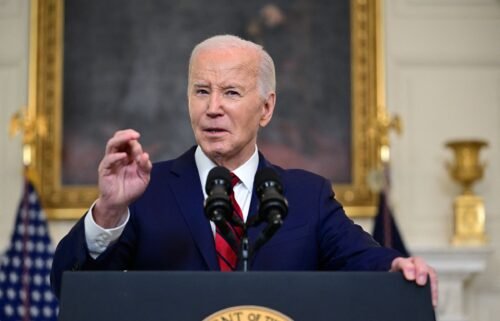What you need to know about coronavirus on Monday, August 3

No one is safe from the coronavirus.
Dr. Deborah Birx really wants that message to hit home. The White House coronavirus response coordinator warned yesterday that the United States had entered a “new phase” in the pandemic. “What we are seeing today is different from March and April. It is extraordinarily widespread,” Birx told CNN, pointing to cases rising in both urban and rural areas.
So far, more than 4.6 million Americans have been infected and at least 154,860 have died, according to Johns Hopkins University data. And the US Centers for Disease Control and Prevention predicted over the weekend that 19,000 more Americans could die from Covid-19 in the next 20 days. The CDC’s new composite forecast sees an average of almost 1,000 US deaths every day for the next 30 days.
Health officials say the best ways to curb this crisis are also some of the easiest: Avoid gatherings, stay at least 6 feet away from others and wear a mask. But despite the continuing rise in cases, some Americans are still choosing to attend large events and refusing to wear face coverings.
That attitude is forcing more states to adopt stricter measures. At least 30 states have paused their reopening plans or imposed new restrictions to combat a rise in cases, and at least 39 states have some kind of mask order in place.
“We’re getting close to about 55% of Americans wearing a mask,” said Dr. Chris Murray, a researcher behind an influential coronavirus model from the University of Washington. “That’s good news, but of course it’s a long way to go before we get to the levels like Singapore has at 95%, which would really save a lot of lives in this country.”
YOU ASKED. WE ANSWERED
Q: Do some people have protection against the coronavirus?
A: Maybe. A study published last week suggests that the immune systems of some people who have not been exposed to the virus could have some familiarity with the pathogen — possibly helping to reduce the severity of illness if that person does get Covid-19.
The study found that a large percentage of the population appears to have immune cells that are able to recognize parts of the SARS-CoV-2 virus. Among a sample of 68 healthy adults in Germany who had not been exposed to the coronavirus, 35% had T cells in their blood that were reactive to the virus. T cells are part of the immune system and help protect the body from infection. The researchers think this protection may come in part from past exposure to one of the four known circulating coronaviruses that cause the common cold in millions of people every year.
Send your questions here. Are you a health care worker fighting Covid-19? Message us on WhatsApp about the challenges you’re facing: +1 347-322-0415.
WHAT’S IMPORTANT TODAY
Melbourne wakes up to a new lockdown reality
About 5 million people in Melbourne are contending with some of the harshest restrictions ever imposed on the city, after the premier of the Australian state of Victoria declared a “state of disaster” yesterday and a curfew was put in place between 8 p.m. and 5 a.m. Only one person per household is allowed to leave home once a day to pick up essential goods. Even then, they must stay within a 5 kilometer (3.1 miles) radius of their home.
The state recorded 429 new Covid-19 infections Sunday, down from 671 cases the day before. In total, Victoria reported 12,000 infections and 136 deaths so far.
The situation in Melbourne shows how quickly early success in containing the virus can unravel. As recently as in May, Australia was held up as a global model for its handling of the outbreak, which started with early measures to bar entry from high-risk countries. Stricter curbs on social gatherings, expanded testing and restaurant closures followed as cases rose, with some states sealing their borders.
Coronavirus reaches top levels of India’s politics
India has just experienced its deadliest week since the start of the pandemic, registering 5,300 Covid-19 deaths in the past seven days.
The virus has now reached the highest levels of the Indian government, with several senior politicians testing positive yesterday. Minister of Home Affairs Amit Shah, who had met Prime Minister Narendra Modi for a cabinet meeting on Wednesday, was admitted to hospital after testing positive. Shah has been actively involved in the government’s coronavirus response over the past few months, making visits to treatment centers and emergency field hospitals.
After meeting Modi, Shah also met with other government officials and members of parliament, including lawmaker Babul Supriyo, who said yesterday that he would be self-isolating and getting tested.
Uttar Pradesh’s minister for technical education, Kamal Rani Varun, died yesterday at a hospital in Lucknow, where she was receiving treatment for coronavirus.
India, population 1.3 billion, has reported more than 1.8 million cases overall. The country did receive some good news over the weekend when Bollywood star Amitabh Bachchan was discharged from hospital after recovering from the virus. .
Critics accuse Duterte of using Covid-19 to crack down on dissent
Questioning the world’s toughest coronavirus restrictions can be a risky business in the Philippines.
In mid-March, Philippine President Rodrigo Duterte ordered parts of the country into a quarantine that would eventually last up to 80 days, and become one of the world’s longest and strictest lockdowns.
Protests against job losses and food shortages during that period were met with a strong police response and mass arrests. In April, Duterte publicly said police should “shoot … dead” anyone who violated virus restrictions.
Though restrictions were eased in June, owing to concerns around the economy, cases have since risen, with the Philippines currently reporting the second-highest number of confirmed cases in Southeast Asia. The country announced its highest single-day jump in new infections yesterday and the capital Manila is due to return to a modified lockdown from midnight Tuesday.
But as millions of Filipinos return to lockdown, critics of the President allege that newly introduced sweeping anti-terror legislation could be used to further stifle dissent — especially around the virus. Ben Westcott and Anne Lagamayo report.
August will be key in Latin America’s coronavirus fight
The number of people who have died of the coronavirus in Latin America and the Caribbean has topped 200,000. Almost half — 94,000 — of the victims died in Brazil. The region is the current global epicenter of the pandemic, exposing the weak response of many governments there.
At least six top government officials have tested positive for the coronavirus so far in Brazil, the country with the second-highest number of confirmed cases and deaths globally after the US. More than a dozen officials, including the interim president, have tested positive for the coronavirus in Bolivia, which broke its own record for new infections in a single day last week. Peru, Argentina and Colombia are trying to catch up to surging case numbers with new quarantine orders. And on Friday, Mexico overtook the United Kingdom to become the country with the third-highest number of Covid-19 fatalities globally, according to Johns Hopkins University data.
ON OUR RADAR
- 36 crew on a Norwegian arctic cruise ship have tested positive for Covid-19.
- The British government has procured millions of two separate tests that will be able to detect the virus in 90 minutes. The tests will be rolled out in hospitals, care homes and labs across the UK next week.
- A major incident has been declared in Manchester, England over increases in coronavirus infection rates across “multiple localities.”
- Dwayne “The Rock” Johnson says the Netflix film “Red Notice” will resume shooting in a quarantined bubble.
- Philadelphia Eagles head coach Doug Pederson has tested positive for Covid-19.
- The coronavirus has reunited two long-lost sisters who haven’t seen each other in over 50 years.
- Dozens of people attended a first responders party at a bar in Los Angeles on Friday night — without wearing masks or adhering to social distancing.
- After being on a ventilator for six weeks due to Covid-19, 28-year-old Mayra Ramirez was so sick she needed a double lung transplant. Her message to those not taking the virus seriously: “It happened to me. It can happen to them.”
- Georgia’s largest school district has confirmed that around 260 employees have either tested positive for Covid-19 or have been exposed.
TOP TIPS
‘Not all screen use is equal’
When it comes to screen time, parents should start worrying less about the amount of time their teenagers are online and instead focus on the quality of the content.
In the age of online classes and Zoom friends and family meetups, the quality of teen content is more important than ever, and parents should begin to learn about the online content their child is engaging with rather than counting the minutes on the clock.
Sonia Livingstone, a professor of social psychology at the London School of Economics, suggests that parents look out for three C’s when monitoring their children’s online activities: content, connections and context.
TODAY’S PODCAST
‘You hear all these things about children [not being impacted] … but it’s the adults that need to be healthy in order to serve our children.”
— Dr. Grenita Lathan, Houston Independent School District
How does one of the largest school districts in the country plan for more than 200,000 K-12 students to start the year virtually? CNN’s Bianna Golodryga speaks with Lathan, the interim superintendent of the Houston Independent School District, about her decision to keep students and teachers out of the classroom when they first “return” to school — and how “in-person” learning may eventually be achieved. Listen Now.



